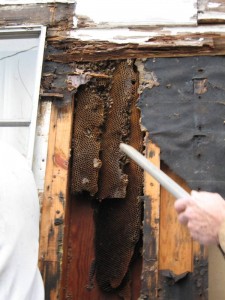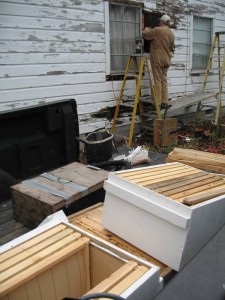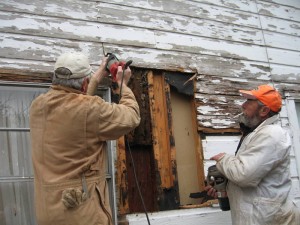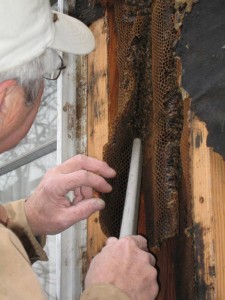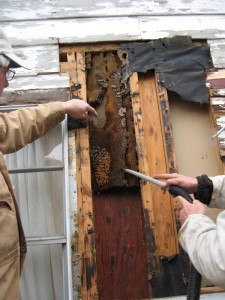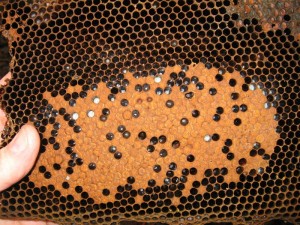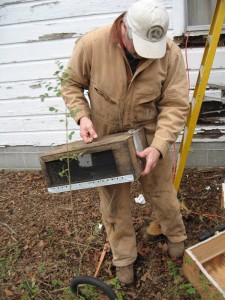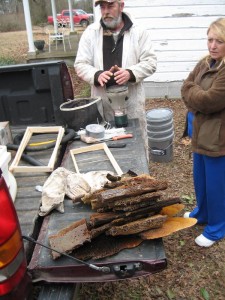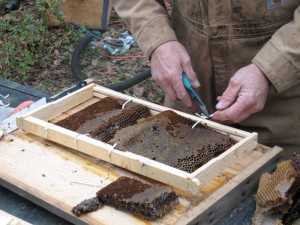I attended the 15th Annual Auburn University Beekeeping Symposium yesterday. There were many knowledgeable beeks there, include my mentor, who was kind enough to introduce me around.
Given my previous stingful experience with cutting a bee hive out of my neighbor’s house, I was interested in attending a breakout session on how to do a proper cutout. The presenter was pessimistic about getting a cutout to survive in a new hive, but it became apparent that in the audience there was someone with a considerable amount of experience at doing this – David Kelton.
Mr. Kelton is a retired electrical engineer who is also an experienced beekeeper (and president of the Etowah County Beekeepers Association). I introduced myself after the lecture, and he invited me to observe a cutout he had scheduled for the next day in Albertville, Alabama, a small town about 60 miles northeast of Birmingham.
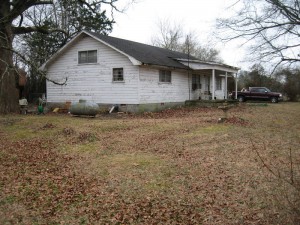
This house near Albertville was undergoing remodeling when a bee hive was discovered in an exterior wall.
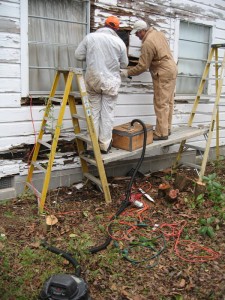
Mr. Kelton and his assistant collecting bees with a “bee vac”, a ventilated box hooked to a small shop vacuum.
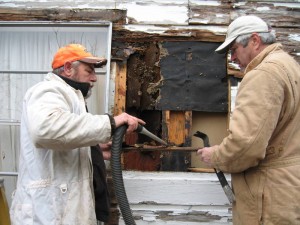
The bees are remarkably docile, possibly because it’s so cold (about 30 degrees F). A bee veil would still be a good idea, though.
I learned that one of the secrets of keeping bees alive during the cutout is to use a vacuum just strong enough to get the bees off the comb – a stronger vacuum kills the bees as they pass through the vacuum hose.
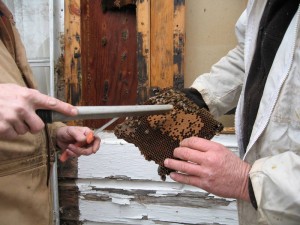
The brood comb is suctioned and removed, but still no queen. She is found in the very last piece of comb removed.
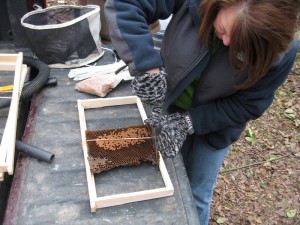
Mrs. Kelton mounts the brood comb into a frame. Installing this frame into the new hive will increase the chance that these bees will survive.
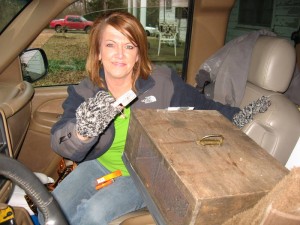
Mrs. Kelton keeps the bees warm in the cab of the truck. She is holding the queen in a small cage. The bees will be installed into a hive using the combs obtained during the cutout.
Here is a video on YouTube of this cutout:
http://www.youtube.com/watch?v=aI87v-itOA8
When you watch this video, notice how the bottom and top combs are removed first, trapping the queen in the last remaining (middle) comb. A nice job by the Keltons, and a good learning experience for me.


